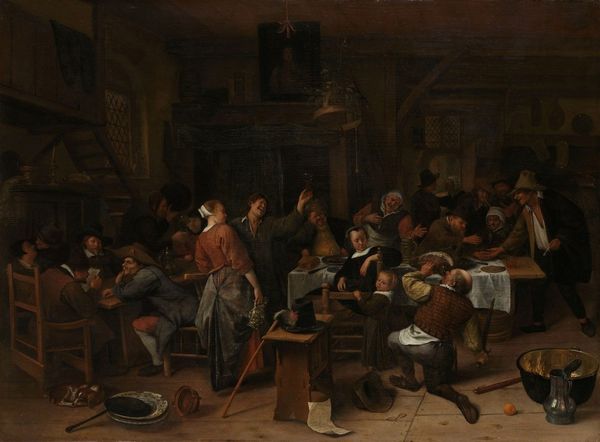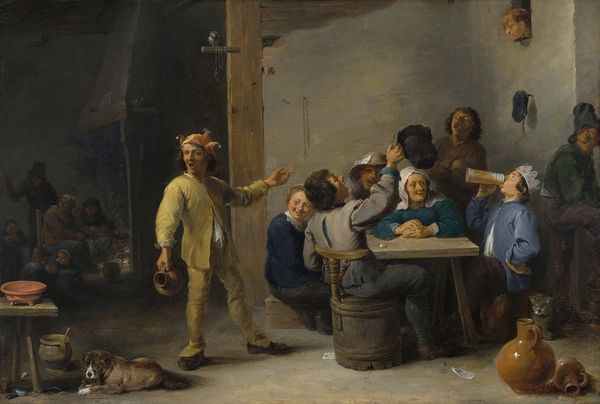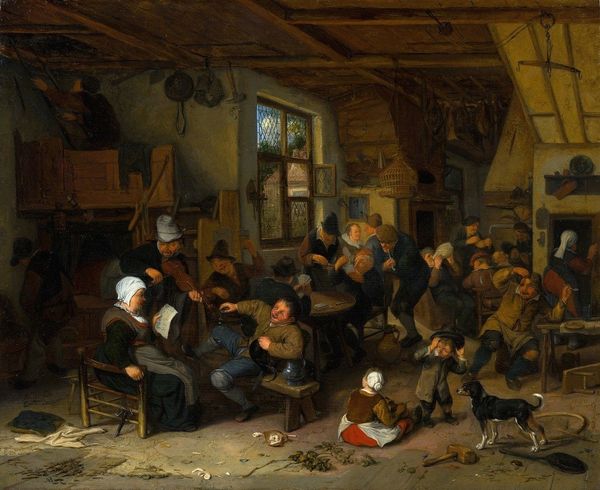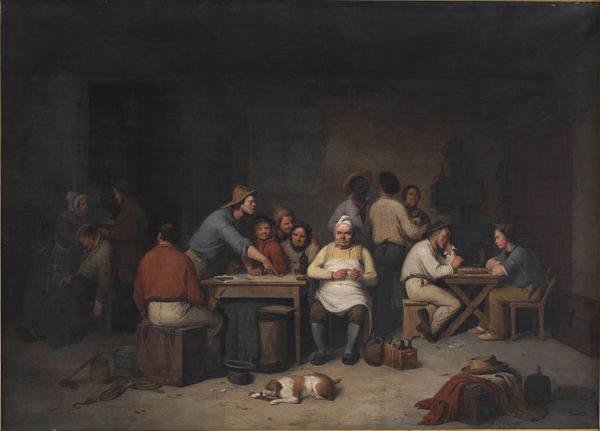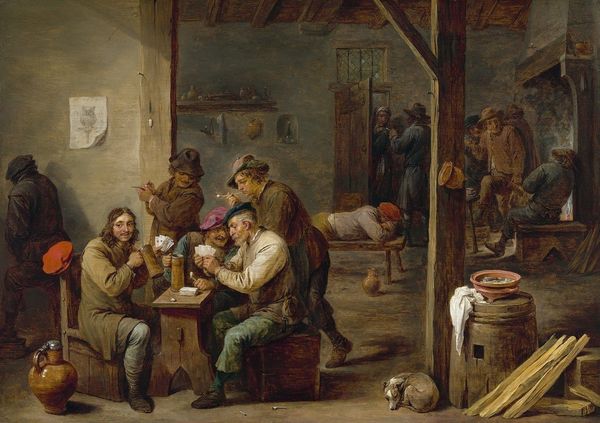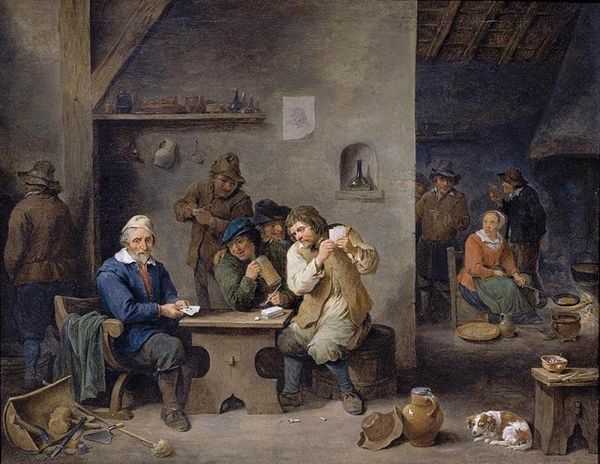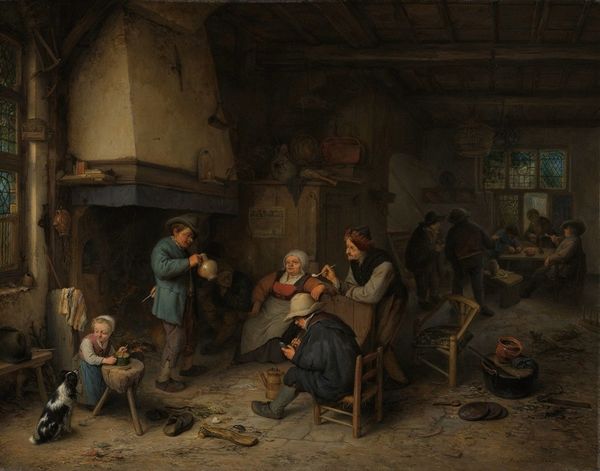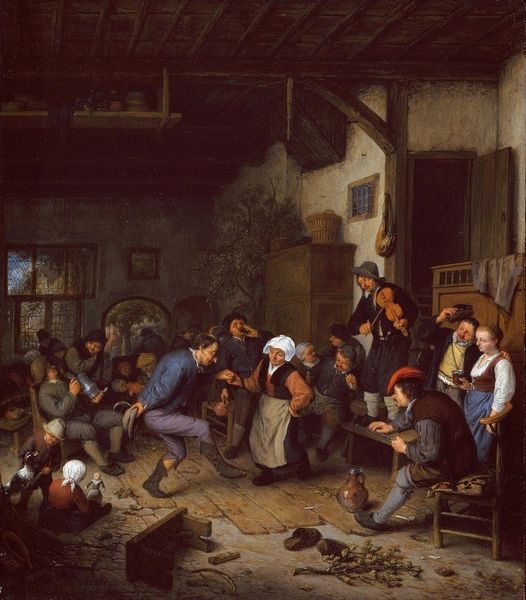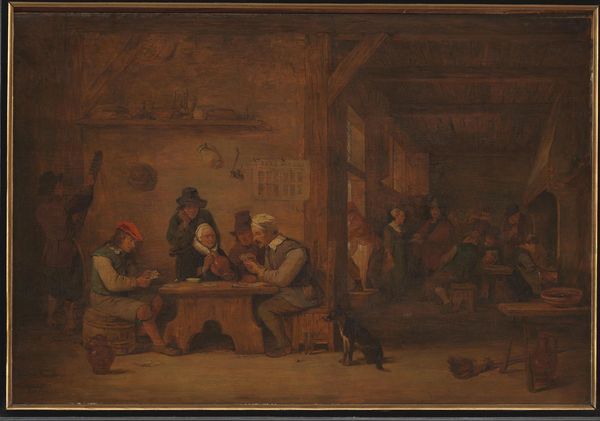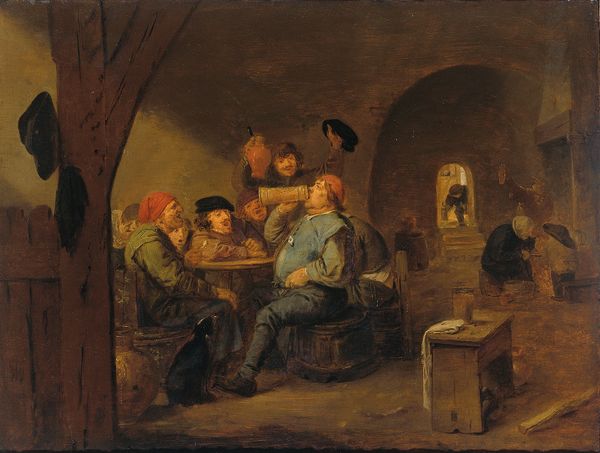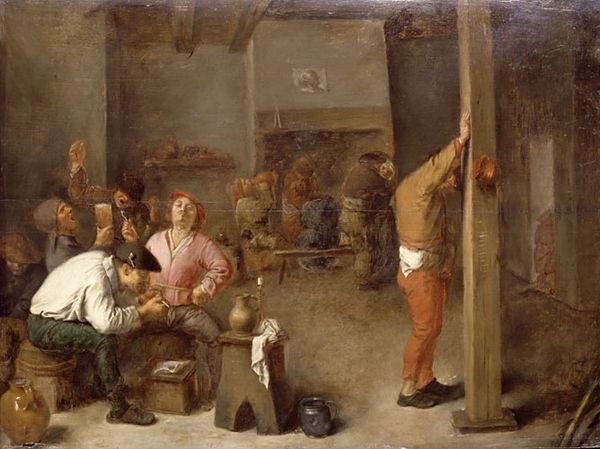
painting, oil-paint
#
figurative
#
baroque
#
painting
#
oil-paint
#
figuration
#
oil painting
#
intimism
#
genre-painting
Copyright: Public Domain: Artvee
Curator: Looking at David Teniers the Younger's "Game of Backgammon" from around the 1640s, what’s your first impression? Editor: Immediately, a sense of enclosed revelry. It’s the sort of scene you might overhear before you actually see it – warm, smoky, a bit rowdy, but ultimately familiar. Curator: Teniers was a master of genre painting. Notice the light and shadow interplay typical of the Baroque style. He created this tavern scene using oil paints. Look at the details in the figures and the environment. You can almost smell the beer. How do you interpret this everyday scene, considering its symbols and atmosphere? Editor: The backgammon itself is key. Board games are such persistent metaphors for life's uncertainties. But here, consider also the setting—a public house. It's a stage for interaction, where status temporarily dissolves, yet hierarchies persist through clothing, expressions, and how much space someone occupies. Curator: And it seems class anxieties are central to Teniers' genre paintings. These figures represent the working classes, not necessarily wealthy, but central to understanding broader socioeconomic frameworks. This level of detail suggests Teniers closely observed and meticulously documented their lives and environments. We also have to consider the production of the piece itself. What would Teniers need? Pigments, a canvas, the ability and support to set up his easel in a location such as this. Editor: Precisely! Consider, too, the iconography embedded in this tavern: a dog curled in slumber by woodworking tools implying leisure, labor and fidelity; the woman peering out a window suggests either curiosity or isolation—a marginal witness to the scene inside. Those symbols enhance the scene far beyond just boisterous entertainment. The composition, almost a diptych, too; that doorway frames yet another group adding narrative layers about togetherness and separation. Curator: Absolutely. We see social dynamics at play as well. It gives viewers a glimpse into this time through art. A view into lives otherwise unrecorded. Even those simple garments would have been essential to create the overall atmosphere. The fabric tells as much a story as any gesture here. Editor: In the end, Teniers transforms something mundane, a casual gathering over a backgammon game, into something evocative about the universality of human connection—with persistent visual reminders about class and labor, which continue even now. Curator: It becomes almost a historical artifact within an artwork, documenting a particular time and social context through the careful considerations in its process. Thank you for unpacking that.
Comments
No comments
Be the first to comment and join the conversation on the ultimate creative platform.
